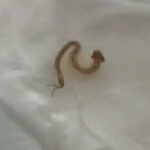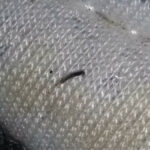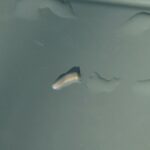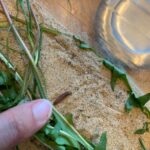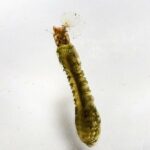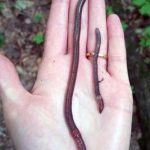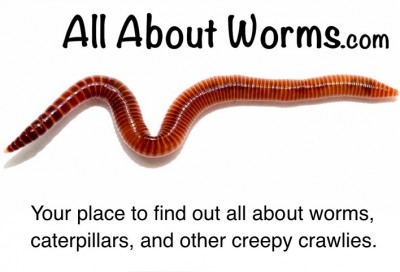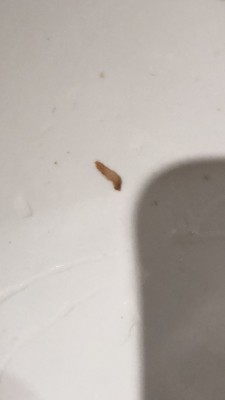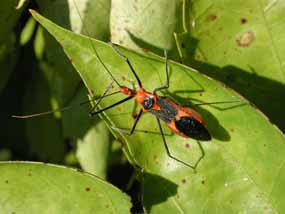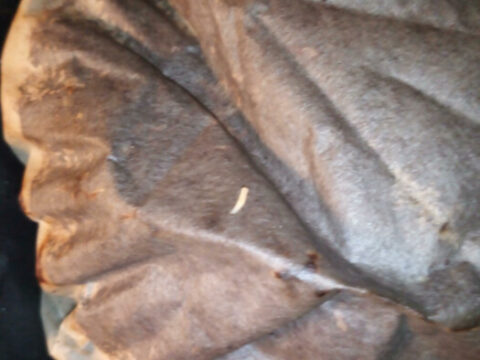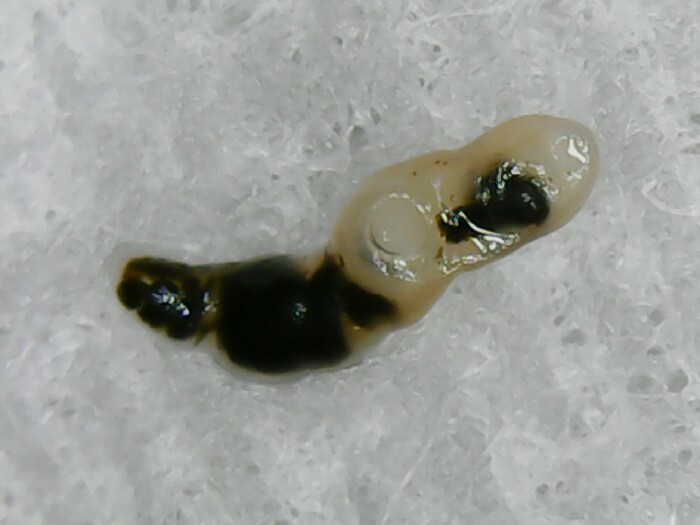
“What in the world are these little wormlike creatures?” asks Erin in her submission regarding the translucent organism with black entrails pictured below. “Here’s the story of how we found them: My partner and I enjoy herpetology and going “field herping” to search for and photograph reptiles in the wild. We recently visited Whitewater, California and stumbled upon a small California kingsnake (lampropeltis getula californiae) crossing the road. Upon picking it up to take a closer look, we saw these tiny black/transparent worms coming out of the snake’s mouth. It was honestly horrifying, so I can only hope that this animal is able to survive in the wild. Anyway, the worms appeared more like leeches or slugs – I don’t see any segmentation. We have a cheap little USB endoscope that magnifies at 1000x, so I have included close-up photos, as well as a zoomed-out photo next to a penny for scale reference. It appears to me that the black substance is food, waste, or organs inside of a transparent creature. We hope you can identify this species, and help us understand the super interesting interaction between fauna that we witnessed! Thanks so much.”
To start with, we want to express our appreciation and respect for Erin and her partner’s fascination with animals and specifically herpetology (the study of reptiles and amphibians). Field herping sounds like a lot of fun! We also want to commend her on — and thank her for — the excellent photos she sent in, which are so helpful when we try to identify the critters we are asked about, as is the bountiful context she sent in! Now, we agree that these worms bear a passing resemblance to something slug- or leech-like, given their sliminess, though we will point out that leeches are segmented! We think the comparison to slugs is more accurate, and we think these could actually be some species of snail.
These critters look like the fleshy part of the common periwinkle, which is a species of sea snail. It does not make much sense for these to be common periwinkles, since California kingsnakes are land snakes and would thus not hunt in aquatic habitats. But it still got us thinking about snails, and it makes some sense: the slimy appearance, lack of uniform shape to the body, and coloration are all evocative of snails. More than that, the fact that the snail was spitting them out also adds up. Many species of snails (and slugs) will secrete a foul-tasting or irritable toxin when in the mouth of a predator to force them to spit the snail back out. The biggest hole in this theory is that snails are not included in the California kingsnake’s diet, as they are constrictors. That said, they don’t really eat anything that looks like this. The closest thing we can think of is a severely underdeveloped amphibian (which they do eat). Maybe the snake accidentally ingested some snails, realized ‘this is not what I eat!’, and threw them back up? In any case, given that these creatures were in the snake’s mouth, it is likely that they got mangled, which makes it impossible to say with any certainty what these are. Besides, given their minuscule size, they could be bits of an organism, or even larvae. They do somewhat look like fungus gnat larvae, but as they do not have a defense mechanism that forces predators to spit them out, we find that identification unlikely.
To conclude, we think it’s possible that the California kingsnake Erin found was regurgitating snails (or snail parts). Given their appearance, and the fact that the snake was regurgitating them, this is our best guess, even though snails are not included in the California kingsnake’s diet. We hope this helps, and we wish Erin and her partner the very best.
All About Worms is always free, always reader-supported. Your tips via CashApp, Venmo, or Paypal are appreciated! Receipts will come from ISIPP Publishing.
You might also find these guys interesting!





